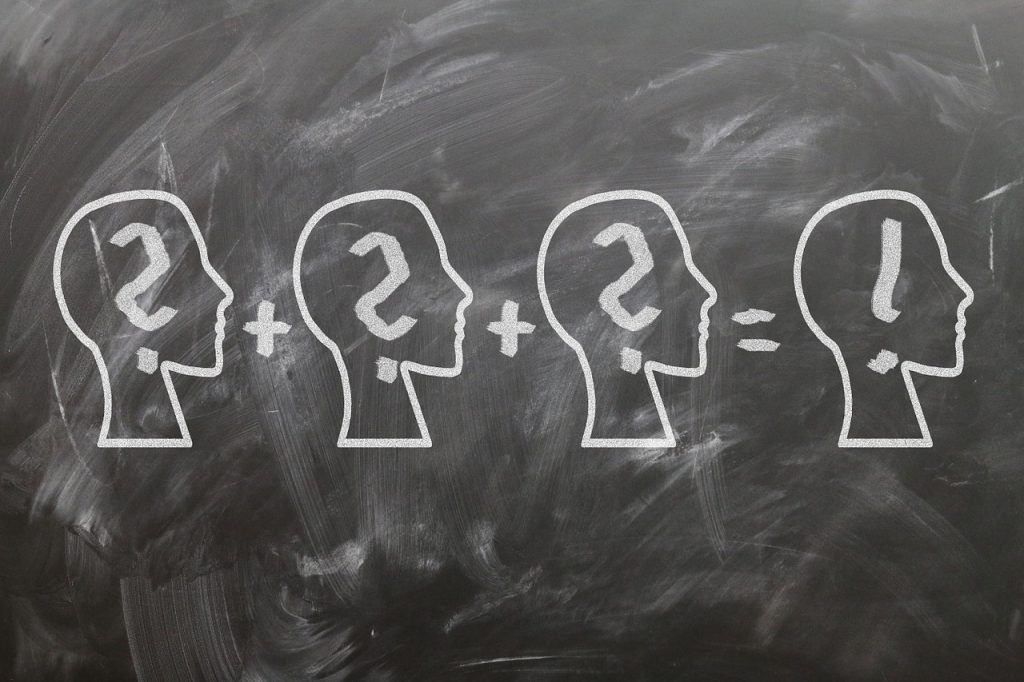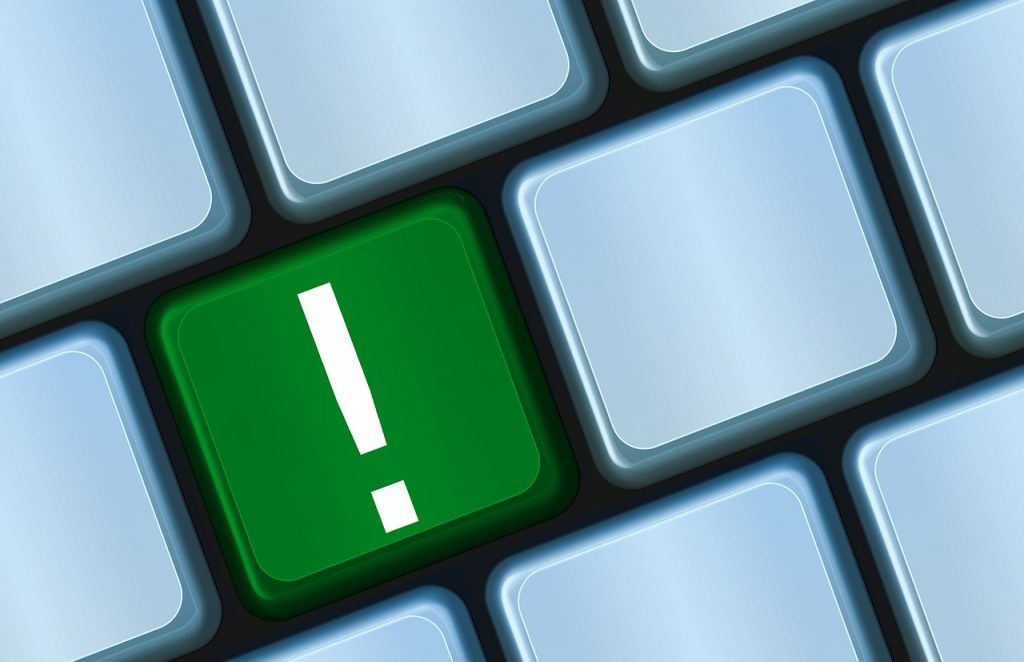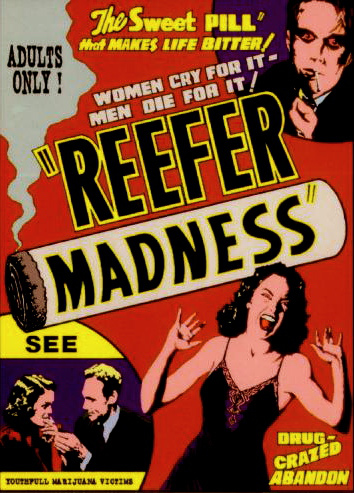!
Five exclamation marks, the sure sign of an insane mind. — Terry Pratchett
Today’s opening question should reveal the impact and influence of today’s topic:

(a) ok
(b) ok.
(c) ok!
All of them are the exact same word with slight variations in their punctuation. And yet, they convey worlds of different meanings. So, how can the psychology of punctuation help you in day-to-day life?
? . , ; … : !!!
For a long time in humans’ history with writing, punctuation was pretty straightforward. But with the invention of the exclamation mark, that all began to change…
The exclamation point didn’t exist until the 15th century, and it was created as a sign of admiration (e.g., “Lo! Behold the Lord”). Originally, it was expressed as “io”—which means “joy” in Latin; however, overtime, the “i” moved above the “o” (which shrank) and the “!” was born!

A study in 2006 looked at how people used exclamation marks in an online question-and-answer forum. From this data set, the most notable finding was that women tended to use more exclamation marks than men (i.e., of all the exclamation marks used, women contributed 73% of them). Importantly, though, both genders were able to benefit from their use as these men and women were perceived as more “friendly.”
Overuse of the exclamation point, though (e.g., using them on back to back sentences) can backfire. For example, when a person uses “too many” exclamation points, they’re perceived as desperate. When used properly, though, exclamation marks can be particularly valuable for communicating gratefulness. So thank you for still reading!
WHO USES THEM?!?!
Although exclamation points can help to establish the tone of a text (e.g., “sure” vs. “sure!”), they can also communicate more than that.

First, the researchers found that when people use a lot of exclamation points, they’re perceived as happier—which makes sense. But more interestingly, the researchers found that when people use a lot of exclamation points, those message-writers were less likely to be perceived as a “supervisor.” That is, when people use a lot of exclamation points in communication, it conveys that they’re speaking with a friend or even that the message-writer him/herself is a subordinate to the person receiving the message.
Because exclamation marks can convey admiration, we don’t expect that people with higher “status” will commonly use them in conversation with people of lower “status.” To further build on this, later research showed that the interpretation of exclamation points themselves varies by the status of the person using them.
For example, researchers looked at the use of exclamation points in negative, online reviews. Interestingly, when “novice” reviewers (e.g., people without a lot of experience in a particular domain) used exclamation points, the review was discredited. However, when experts were using exclamation points, the reviews were trusted.
¡EL FIN!
So, should you use exclamation points when you send texts or emails? Like everything in life, it depends.

In general, I think the takeaway is that the use of punctuation, and particularly “!”, can take on a lot of meanings depending on the context. So, when in doubt, it’s probably best to save that exclamation point for something truly worthy, okay?!!!!!!!!!!
!!!!!!!ly,
jdt
Everyday Psychology: Below, I’ve taken the same message and varied how many and where exactly the exclamation marks are used. How would you interpret each of these statements even though their content is identical? How do your inferences change depending on the use of exclamation marks? I’d love to hear your thoughts in the comments:
- I can pick you up from the airport. Did you check luggage?
- I can pick you up from the airport. Did you check luggage?!
- I can pick you up from the airport! Did you check luggage?!
- I can! pick you up! from the airport! Did you! check luggage?!
Folse, J. A. G., Porter III, M., Godbole, M. B., & Reynolds, K. E. (2016). The effects of negatively valenced emotional expressions in online reviews on the reviewer, the review, and the product. Psychology & Marketing, 33(9), 747-760.
McAndrew, F. T., & De Jonge, C. R. (2011). Electronic person perception: What do we infer about people from the style of their e-mail messages?. Social Psychological and Personality Science, 2(4), 403-407.
Waseleski, C. (2006). Gender and the use of exclamation points in computer-mediated communication: An analysis of exclamations posted to two electronic discussion lists. Journal of Computer-Mediated Communication, 11(4), 1012-1024.








See #3, for why high-power women use lots of exclamation points, even with peers or subordinate. (I hope you don’t think this comment is bitchy!!! 🙂 🙂 🙂 lololol!)
https://thecooperreview.com/non-threatening-leadership-strategies-for-women/
That makes total sense why women in those settings would use more exclamation points. They have a fine line for how their statements will be interpreted, whereas a man can get away with phrasing things however they want without receiving such negative attributions. Good point!
Also, I like how tip #3 from that link used my name haha How appropriate for this post 😉
Here are my thoughts:
I can pick you up from the airport. Did you check luggage?
Totally normal interpretation. Someone’s picking me up. Woo!
I can pick you up from the airport. Did you check luggage?!
Now I’m glad that someone’s gonna pick me up from the airport, but I am concerned that something nefarious has been found in the luggage claim and I’m being warned
I can pick you up from the airport! Did you check luggage?!
This just seems too urgent for comfort. I don’t want them to pick me up.
I can! pick you up! from the airport! Did you! check luggage?!
Stroke victim
Thanks for the extra thinking
Haha Yes! Thank you for taking on those questions 🙂 And I think your answers are spot on. I liked your spin on the second option. If my friend sent me that, I’d interpret it as they really hate picking people up from the airport who check luggage ha I totally see your interpretation, too, though. Your last comment made me laugh out loud (i.e., lol)
I definitely have seen in my own messaging a difference in ratio between male/female exclamation point use, but had never been aware of it until I read this post. In such a limited form of communication like texting (and text in general) conveying the nuances of human emotion can be tough.
On a different note, how many emotions are there? I know other cultures have words for emotions, or see greater granularity in some emotions, than we typically do here in America. Has anyone made a list of all emotions and their definitions or a study of them cross-culturally?
Apologies for the digression but your blog really got me thinking.
First, I totally know what you mean about the difficulty of expressing human emotion via text. That’s why I’m always using emojis/emoticons–and probably too frequently ha 😉
Second, in regard to your question about emotions, that’s a good one! Although there are some researchers who still believe there are a certain “set number” of emotions (e.g., happiness, sadness, disgust, anger, etc.), most researchers agree that emotions are “constructed” in the moment. That is, although we may be able to group a bunch of different feelings as “happiness,” each of those instances of affect (i.e., emotion) are different depending on the situation. In turn, this allows for a nearly infinite number of emotional possibilities. If you’d like to learn more about these different perspectives on emotions, you can check out this previous post I wrote on the topic: https://everydaypsych.com/emotion-what-are-thee/
Also, here’s another link discussing whether or not people experience the same emotion (which relates to your question about emotions within the different cultures): https://everydaypsych.com/do-we-feel-the-same-emotions/